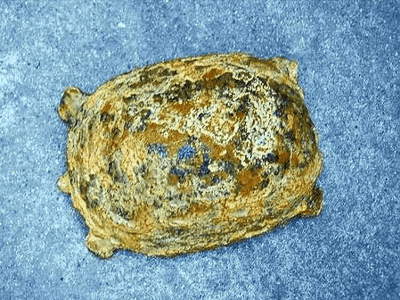It turns out that a 'dog-sized giant scorpion' was walking in the ancient sea over 400 million years ago

When you think of scorpions, most people think of scorpions that are a few centimeters long and at most 10 centimeters long. However, due to the newly announced new species of fossils, more than 400 million years ago,
First mixopterid eurypterids (Arthropoda: Chelicerata) from the Lower Silurian of South China --ScienceDirect
https://www.sciencedirect.com/science/article/pii/S2095927321005004
[Eurek Alert] Mixopterid found in China for the first time ---- Nanjing Institute of Geology and Palaeontology Chinese Academy of Sciences
http://english.nigpas.cas.cn/ns/RelatedNews/202110/t20211009_284537.html
Fossils: Scary dog-sized SEA SCORPION swam the waters of what is now China 435 million years ago | Daily Mail Online
https://www.dailymail.co.uk/sciencetech/article-10106751/Fossils-Scary-dog-sized-SEA-SCORPION-swam-waters-China-435-million-years-ago.html
Umisasori is an ancient chelicerata that appeared in the Ordovician period of the Paleozoic period about 467.3 million years ago, prospered from the Silurian period to the Devonian period, and then became extinct around the Permian period in the late Paleozoic period. I). Among them, the group of the family Eurypteridae is said to have preyed on prey with a special basket-shaped arm with innumerable needles as the name suggests, but so far two genera excavated about 80 years ago. Since only four types of fossils were available, their ecology and habitat were not well understood.
Meanwhile, a research team led by Bo Wang of the Nanjing Institute of Geological Paleontology, Chinese Academy of Sciences has announced a new species of the family Eurypteridae, Terropterus xiushanensis. The genus Terropterus is a word derived from the Latin prefix 'terror' which means 'fear' and the common suffix 'pterus' of Eurypterid which means wings, and xiushanensis is where the fossil excavation site is located. China of Xiushan County is that of that derived from (Xiushan).
Of the following, the left is a holotype fossil attributed to Terropterus xiushanensis, and the right is a restored map.

In addition, multiple appendages (c to e), joints (f), and genitals (g) were also found.

Terropterus xiushanensis is about 1 meter long and is characterized by a particularly large forefoot and a unique arrangement of thorns on the forefoot. There is also the possibility that the tip of the sharp tail was poisonous. Moreover, since the fossils found are not necessarily adult, it is speculated that if they were juvenile fossils, the adults would have been larger.
Terropterus xiushanensis lived between 443.8 million and 419.2 million years ago, one of the two major continents of the ancient supercontinent Pangea. He was walking in the shallow waters of the

In addition, this is the first time that Eurypterid has been found in Gondwana, and since it is the oldest fossil of Eurypterid, this discovery is knowledge of the morphological diversity and geographical distribution of Eurypterid. It is positioned to deepen.
In his treatise, Wang et al. 'The geographical distribution of Eurypterids has been fairly limited. Future studies, especially in Asia, show the global distribution of Eurypterids and other Eurypterids. May become clear, 'he said, motivating future research.
Related Posts:







